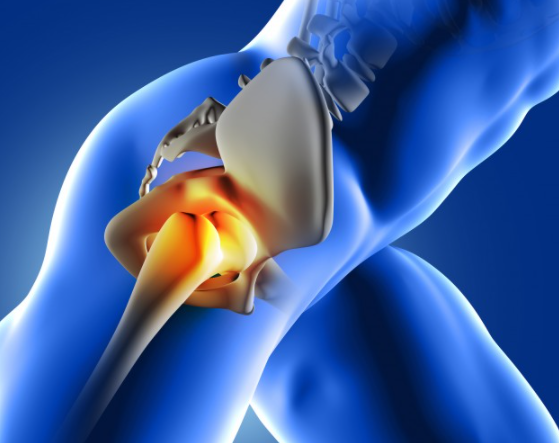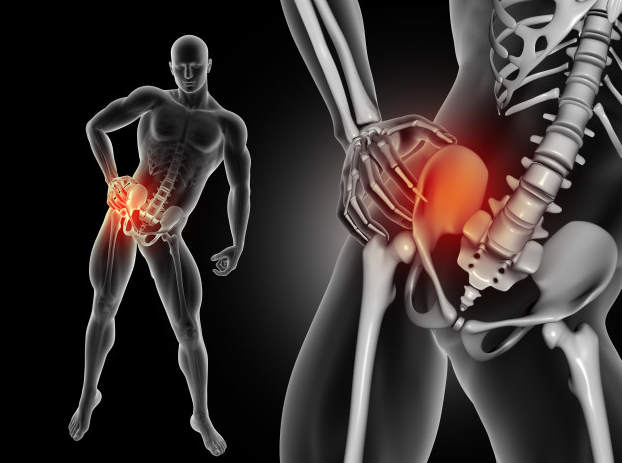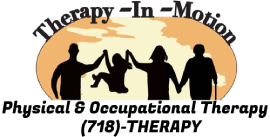
Common Hip Injuries And How To Avoid Them
By: Dr. Abe Kopolovich, DPT, MBA, JD-IP
Hip pain and injuries aren’t restricted to older adults. In fact, individuals between the ages of 35 and 60 often suffer from hip-related issues that limit exercise and even impact their ability to perform routine activities of daily living.
Abe Kopolovich, DPT, MBA owner of Therapy-In-Motion Physical Therapy, explained how otherwise healthy individuals come to experience hip injuries, such as groin strains and bursitis, which is irritation or inflammation that impacts the fluid-filled sacs known as the bursae which act as cushions for the bones, tendons and muscles surrounding joints.

“We’re very fortunate in New Jersey and New York, we live in what I call a ‘recreation mecca,’ ” Kopolovich said. “There is nowhere that you don’t see people jogging, cycling, playing tennis or playing golf. We have a plethora of opportunities to stay healthy, and, as we all learned in grammar school physical education, if you don’t use it, you lose it.”
While having opportunities to engage in physical fitness sounds like a benefit, Kopolovich explained that people who spend 40 hours a week sitting at a desk and haven’t kept up with conditioning often injure themselves.
“We see people that get anterior (frontal) hip pain, usually from overuse,” he said. “We call that a hip flexor strain. It’s very common. The other thing that we see, especially in tennis and in golf, is what we call greater trochanter bursitis, which basically means the side of your hip hurts and sometimes swells. The other most common thing around the hip is gluteal (muscles in the buttocks) strain because, again, they’re not prepared.”
Common Hip Injuries and the Importance of Stretching
Dr. Kopolovich added that as individuals age, arthritis and the erosion of the soft tissues of cartilage may require surgical intervention.
“But the most common injuries that we see in our area are definitely the hip flexor strain, the greater trochanter IT band type, and gluteus,” he said. “We actually have a hip stretching protocol that we give everybody who has hip pain. That involves the trunk, stretching your IT band, and your gluteals, and also encompasses your lower back.”
These stretches should be performed once people are warmed up as well as post-activity, Dr. Kopolovich said.
“It’s very important to keep the flexibility because a lot of people will pick one sport,” Dr. Kopolovich said. “They’re going to just play tennis, just play golf, just cycle, or they’re only going to run. As we’ve learned through science and research, multidirectional athletes get injured less often. The common lay person picks one thing and does only that. That’s where you get these overuse strains, or bursitis injuries.”
For individuals who do require surgery, Therapy-In-Motion’s physical and occupational therapists are trained in post-operative care to assist in recovery and restore patients to a functional level.
Treating The Individual Not Just The Injury
Therapy-in-Motion’s level of care has made the company a physical therapy leader in the tristate area. When patients first seek treatment, therapists evaluate their level of pain, range of motion restrictions, and ability to perform activities of daily living. Recognizing that hip pain does not just limit itself to that area of the body, therapists and trainers also examine above and below the hip region, assessing core stabilizers, knees, ankles and feet.

“Something that Therapy-In-Motion prides itself on is that we just don’t treat injuries, we treat individuals as a whole, and we look at the entire biomechanical chain,” Dr. Kopolovich said. “Then, the plan of care will be made based on those limitations and the process of rehabilitation will begin.”
Depending on a patient’s needs, rehabilitation may involve simplistic modalities to reduce pain and swelling, followed by hands-on mobilization and massages, and then shift to an exercise prescription, ensuring patients return to their functional activity level.



